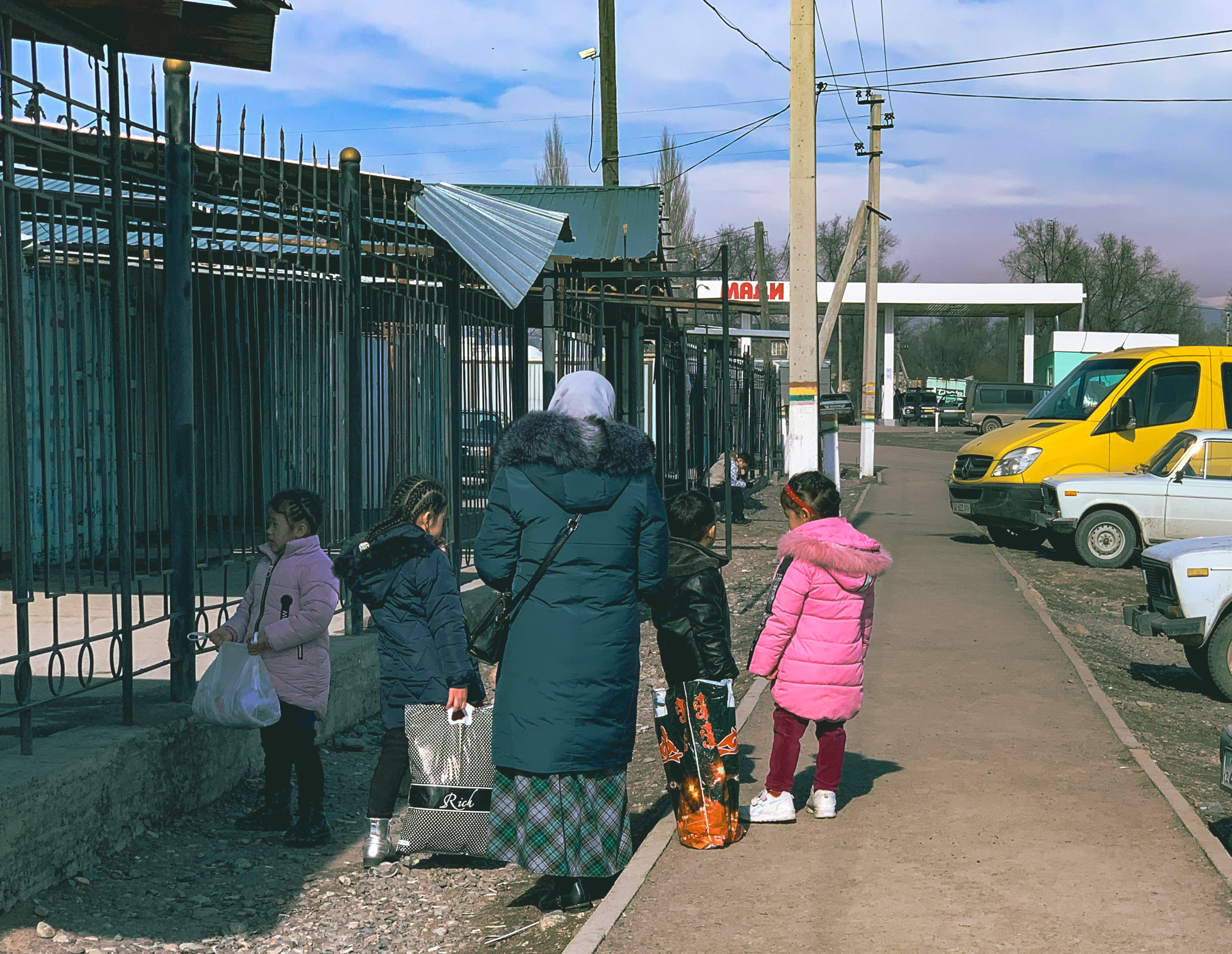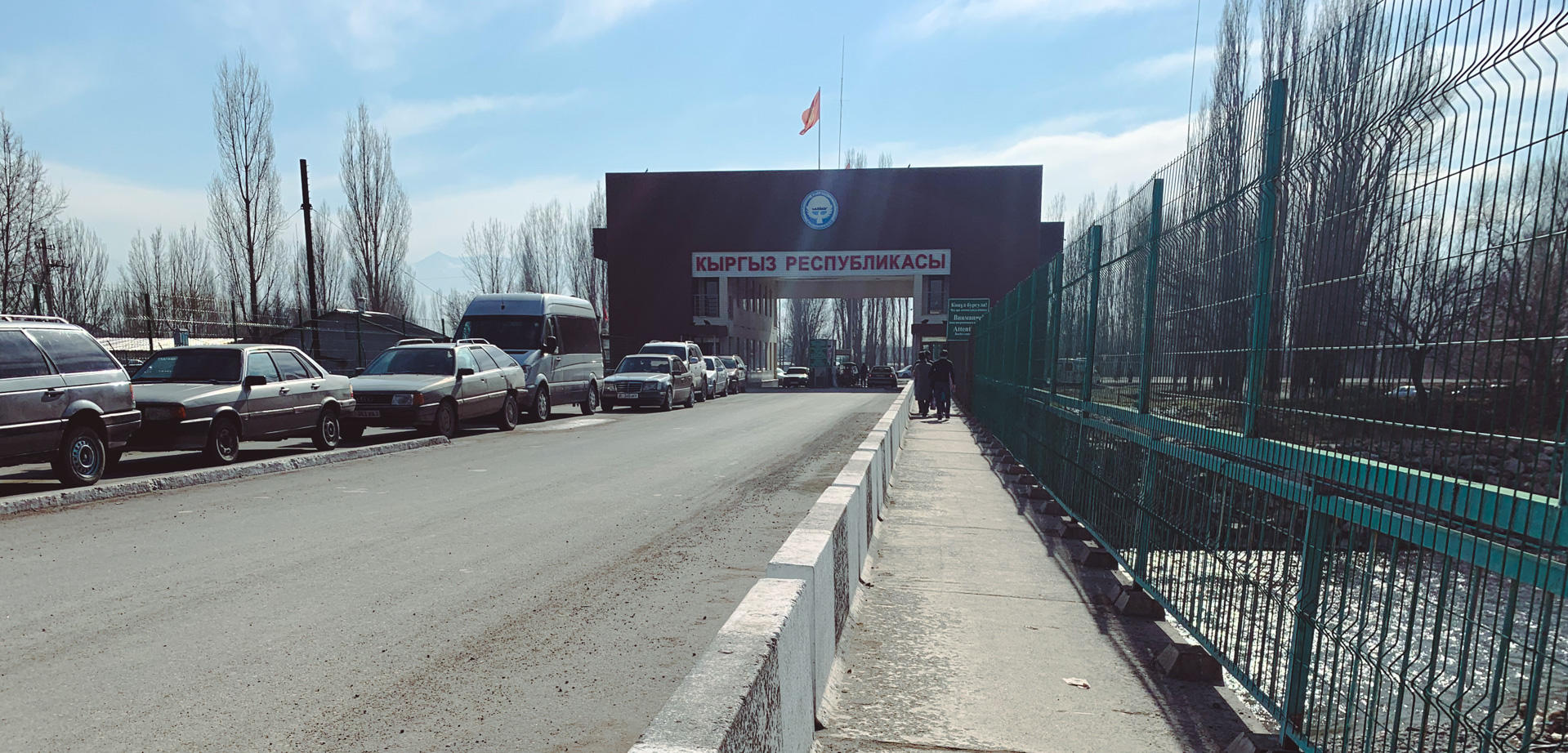Last week, Adamdar/CA contributor Timur Nusimbekov headed to the Korday district of Kazakhstan’s Zhambyl region and spent several days there in order to see the fallout from the pogroms of February 7-8 with his own eyes, and to hear the stories of local residents who lived through these terrible days.

I spent several days in the villages of Korday district of Kazakhstan and in the adjacent territory of Kyrgyzstan’s Tokmok district.
This photo was taken three days ago. The place: a checkpoint on the state border of Kazakhstan and the Kyrgyz Republic. The woman and children in the shot are Kazakhstani refugees returning from Kyrgyzstan to their home village in the Korday district.
In some countries, doctors, psychologists, social workers, and governmental, humanitarian, and civil society organizations meet refugees upon their return to their home countries. Especially in cases when 99% of the refugees are women, children, and the elderly. Especially when they have survived pogroms and many of them have seen horrible things—killings and fires. When many of them have developed post-traumatic stress disorder since the bloody night of February 7.
Unfortunately, no one met this woman and her children that day on the Kazakhstan side of the state border. Only relatives came. There were no psychologists or social workers to help these people to cope with the horror of those days. There was no field kitchen to feed refugees. There was no social services vehicle to take this woman and her children home.
They returned to one of the villages where many residents are still afraid to go outside.
They returned to one of the villages where many residents are still afraid to go outside. Burgled and burned houses and stores are still standing on some of these streets. Streets where even police and the national guard travel only in groups, always in body armor, armed with guns.
I hope that not only police, special forces, and national guard squadrons will arrive in the affected villages in the near future, not only reporters and journalists, not only the Kazakhstani and Kyrgyz volunteer groups handing out humanitarian aid here. But also all of the others who should be working in a time, place, and situation such as this: psychologists, lawyers, social workers, members of humanitarian organizations and civil society. Researchers should come, sociologists and anthropologists, servants of the law and the arts, to see everything with their own eyes. To speak with the locals. To understand what happened here, how, and why. And to try to make it so that women and children no longer have to flee their homes, their villages, and their county by night to the other side of the border.

